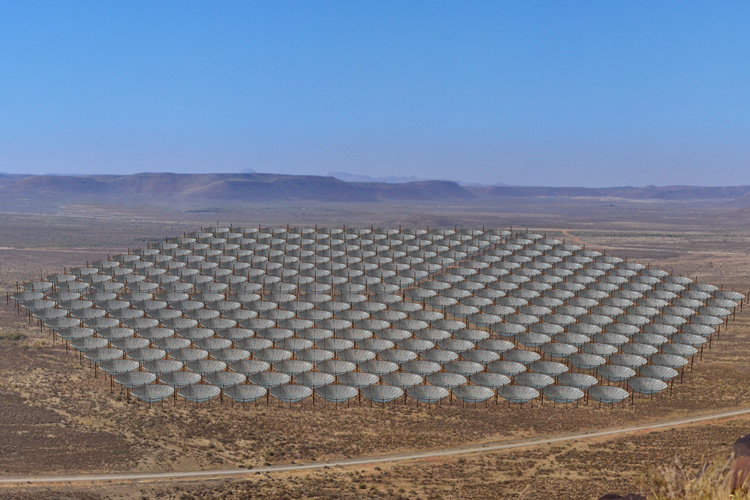-
Puzzling new supernova may be from star producing antimatter
November 14, 2017
An exploding star that continued to shine for nearly two years — unlike most supernovae, which fade after a few weeks — is puzzling astronomers and leading theorists, including UC Berkeley astrophysicist Daniel Kasen, to suggest that the event may be an example of a star so hot that it produces antimatter in its core. Stars would have to be very massive to get this hot, Kasen said, which is why most astronomers assumed they existed, if at all, only in the early years of the universe.
Tags:More -
Selections Made for the JWST Director’s Discretionary Early Release Science Program
November 13, 2017
Following the recommendation of the Time Allocation Committee and a thorough technical review, the Space Telescope Science Institute (STScI) Director Ken Sembach has selected 13 science programs for the JWST Director’s Discretionary Early Release Science Program (DD-ERS).
Tags:More -
Astronomers strike cosmic gold
October 16, 2017
The first detection of gravitational waves from the cataclysmic merger of two neutron stars, and the observation of visible light in the aftermath of that merger, finally answer a long-standing question in astrophysics: Where do the heaviest elements, ranging from silver and other precious metals to uranium, come from?
Tags:More -
#MeasureEarth: a world-wide experiment to determine whether Earth is flat or round
September 18, 2017
Former graduate student Lauren Weiss (now a postdoc at the University of Montreal) has created a public experiment called “Measure Earth," in which ordinary citizens can measure the curvature of Earth at noon on Oct 24th. Read further to see how you can participate this worldwide experiment!
More -
How to Safely View the Eclipse: Tips from Professor Alex Filippenko
August 8, 2017
Anyone planning to observe the eclipse should obtain a pair of certified eclipse glasses (see American Astronomical Society recommendations). While the glasses should be removed during the couple of minutes of totality, they must be worn when looking at the eclipse leading up to and following totality, or when viewing the partial eclipse from outside the zone of totality. The total solar eclipse – the first visible from the continental U.S. since 1979 – will traverse the entire country in a band about 70 miles wide, beginning the morning of Monday, Aug. 21, on the Oregon coast and ending 90 minutes later, in mid-afternoon, off the coast of South Carolina. Many millions of people along the path of totality are expected to watch as the moon eclipses the sun, while even more outside the path of totality will see a partial solar eclipse.
More -
New Storm Makes Surprise Appearance on Neptune
August 2, 2017
Extremely large, bright storm system caught on camera at W. M. Keck Observatory Maunakea, Hawaii – Striking images of a storm system nearly the size of Earth have astronomers doing a double-take after pinpointing its location near Neptune’s equator, a region where no bright cloud has ever been seen before.
Tags:More -
Pioneering radio astronomer Harold Weaver dies at age 99
May 3, 2017
Harold Francis Weaver, a pioneer of radio astronomy who discovered the first microwave laser, or maser, in space, passed away peacefully in his Kensington, California, home on April 26 at the age of 99.
More -
Astronomy Crowdfunding Soft Launch Starts Now!
March 28, 2017
Have you ever wondered what it would be like to walk on the surface of Pluto, or fly by the supermassive black hole at the center of our galaxy? A group of scientists in the Department of Astronomy would like to help you find out!
More -
$5.8 million grant helps expand radio telescope to study ‘cosmic dawn’
March 6, 2017
A radio telescope array being built in South Africa to explore the period after stars first formed in the early universe has received $5.8 million in new funding from the Gordon and Betty Moore Foundation.
Tags:More -
Two postdocs receive fellowships to study exoplanets
January 31, 2017
An incoming postdoc and a departing Ph.D. are among four new 51 Pegasi b Fellows announced this week by the Heising-Simons Foundation.
More










